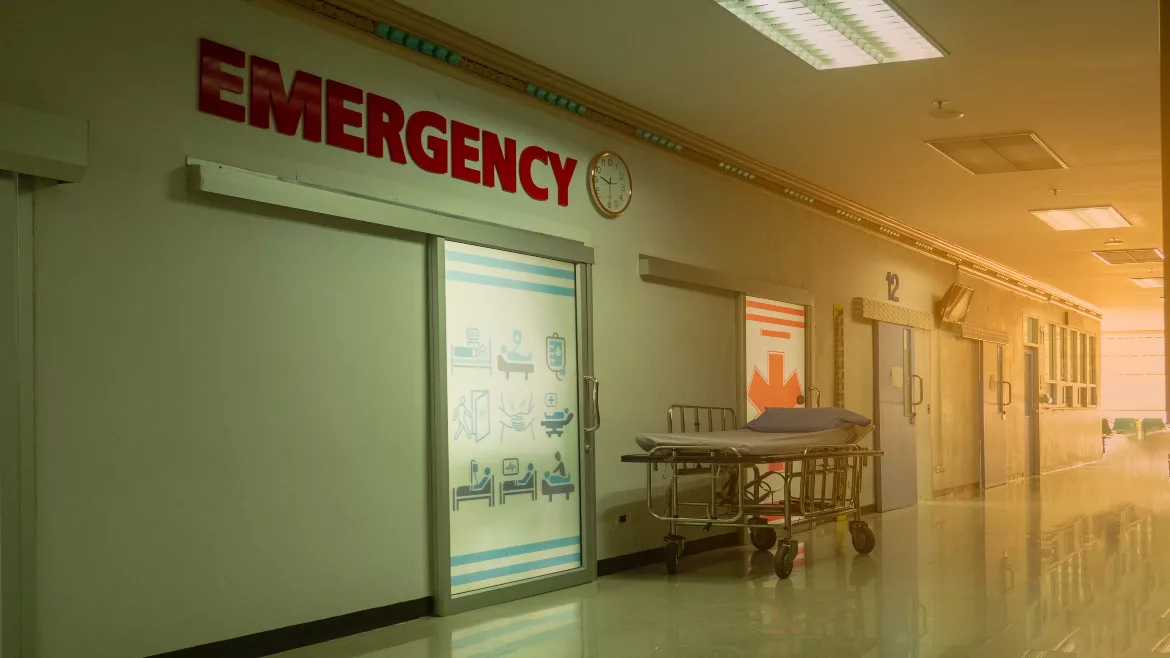Mitigating workplace violence in healthcare with mass notification

Every organization is trying to find ways to mitigate workplace violence, but healthcare organizations have several obstacles that can make this difficult task even more challenging. The number one goal of any healthcare organization is to provide excellent patient care, but any threat of violence can make it hard to achieve this goal. Healthcare administrators need to worry about protecting their staff, their patients, and visitors, including patients’ families and outside contractors. The more audiences that need protecting, the more complex a plan can become. This often leads to organizations deploying separate solutions to address each need, but when an urgent situation takes place, this can cause unforeseen inefficiencies. That’s why many organizations are turning to a mass notification system to help.
No one can say for certain when violence will occur, which is why being prepared is critical to mitigating the damage. Many mass notification systems are becoming more sophisticated, offering critical event management capabilities that go beyond simply sending out an alert. Now healthcare organizations can leverage these tools to manage every aspect of an incident from beginning to end. This starts with identifying the violent situations that people within a healthcare facility may experience.
A physical dispute may require a different response and messaging than one involving a weapon. The protocol may change depending on the number of people involved and the area where the event is taking place. That’s why it is important for healthcare organizations to involve multiple departments when planning for potential incidents. Doctors, nurses, security teams, facility managers, and even HR can provide valuable insight that can otherwise be overlooked. The more input an organization can gather, the more comprehensive a plan they will create. This has the added benefits of getting more departments invested in successfully deploying new strategies and familiarizing more people with the tools and procedures to use and follow during an emergency.
Once an organization has identified the situations it wants to prepare for, the next step is building the messages that need to be sent out. Creating clear, concise, and consistent messaging goes a long way in getting people to follow instructions when notifications are sent out. Messages should be planned for every phase of an event, from an initial alert to an “All Clear” message to let people know an incident has been resolved and normal operations are resuming. Understand that messages should communicate exactly what is happening and what actions the message's recipient is expected to take.
Administrators also need to identify which groups receive which messages. Hospitals and clinics are delicate environments. Knowing where a violent threat is taking place, who needs to respond to assist, and who needs to get out of a dangerous area can all help mitigate the impact of an event. The messages that get sent to security team members may not be the same messages that get sent to other staff members. With a mass notification system, distinct messages can be sent to different designated groups at the same time. This helps better direct the response, minimizes confusion, and can help ensure help is on the way.
The other important component healthcare organizations need to consider is how those messages will be delivered. Mass notification systems offer a wide range of options for audio, text, and visual messages that can be delivered to overhead paging systems, desk phones, desktop computers, digital signage, and mobile devices. This can greatly extend the reach of messages during particularly dangerous events where everyone needs to be alerted. However, mass notification systems can also offer the ability to create zones containing messages to particular floors, wings and even rooms of a building. This can help minimize disruptions in sensitive areas, like visitor waiting rooms, while still alerting people who are in the most danger. Connecting to IoT devices within a facility to a mass notification system can also help mitigate violence by automating steps like locking doors or bringing up security camera feeds with messages.
After initial alerts are sent out, follow-up messages with relevant updates can be sent until the event has ended. Once it has been communicated that normal operations have resumed, mass notification systems can be used to assess how successfully an emergency response plan was executed and provide insight for improvements. This can include seeing whether or not all messages reached their intended audiences if all the steps in the plan were followed, and if people actually responded to requests for help.
Mass notification can also help prevent violent incidents before they even occur. With the ability to schedule messages that are repeated throughout the day, healthcare organizations can alert people within their facilities to keep an eye out and report suspicious activity. Messages can also include information about emergency plans, such as where to find the nearest exit.
So how does this all help mitigate violence? By sending the right message to the right people via a method where they are likely to hear or read a message the moment it is delivered, healthcare organizations can speed up response times, alert people to avoid particular areas, and reduce the overall impact on operations by resolving incidents more quickly. The longer an incident goes on, the more risk for everyone involved. Mass notification can help preplan every step of an incident, so no one needs to be thinking of what to say or do at the moment. It can automate processes and procedures, alleviating and burden of responsibility. This reduces the chance that mistakes are made or that someone misses a message that impacts their safety.
Looking for a reprint of this article?
From high-res PDFs to custom plaques, order your copy today!






